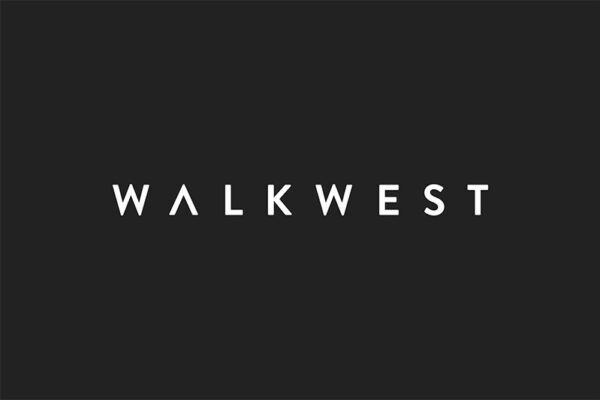Digital Transformation and Higher Education Marketing Environment
Higher education is at a crossroads. Tuition for post-secondary education continues to accelerate. Student debt has surpassed the 1 trillion dollar mark. Once thought of as a viable alternative to traditional universities, massive online open course (MOOCs) providers are facing a difficult time in scaling their models in the world of academia. Leaders like Coursera and Udacity have begun to target corporate customers who are in need of training programs for their workforces to enable digital skills like machine learning and artificial intelligence. These trends have increased competition among colleges and universities creating a difficult landscape from traditional institutions to navigate.
Students now have many options in continuing their education and this has increased competition among universities for top students. This competition for students has put a premium on innovative marketing strategies for community colleges and four-year institutions alike. Students are becoming much more targeted in their school search criteria. In fact, their usage of technology is an integral part of their journey to determine where to attend school. While many colleges have approached this changing landscape by revamping their websites and making them more mobile friendly, this is just scratching the surface of the process to improve marketing approaches.
Gartner Group found that more than half–59 percent–of Chief Information Officers working in higher education expect a significant change to their organization’s business model as a result of digital transformation.
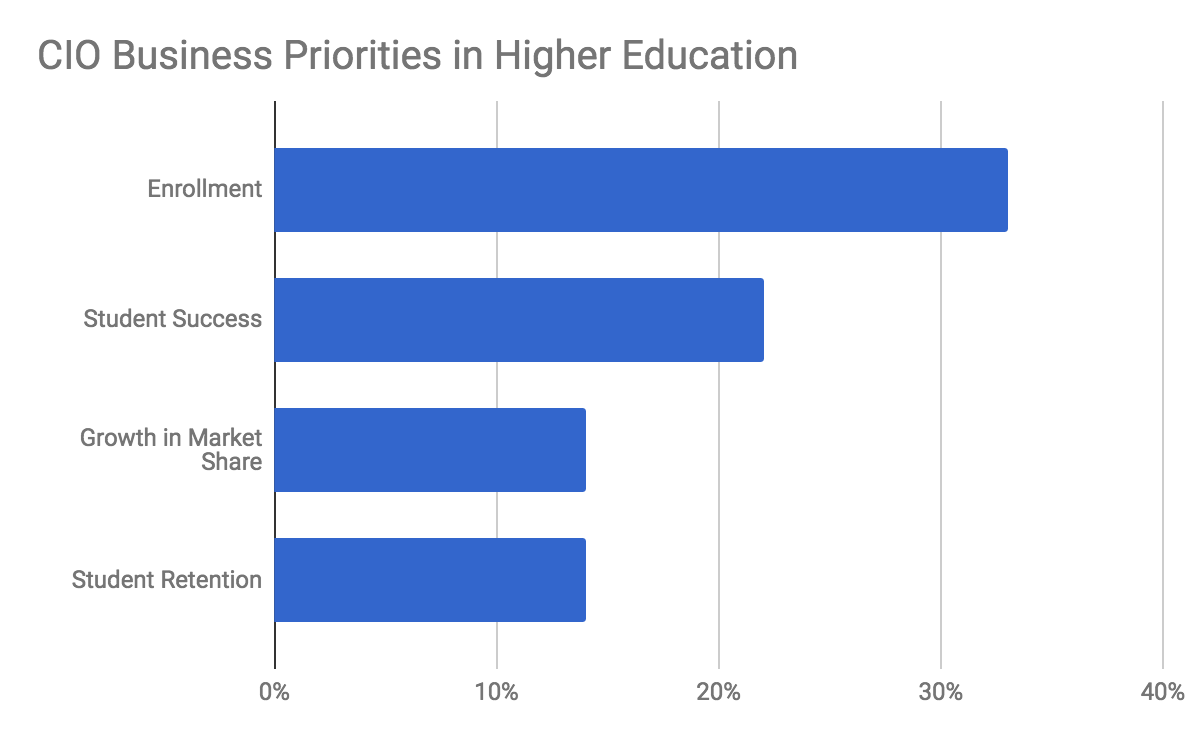
Source: Gartner
A third of respondents cite enrollment as their top business priority, making it the clear leader. The growing need to ensure academic quality by competing for the best and the brightest explains the second business priority, student success (22 percent). Enrollment and student success are both related to growth/market share. However, only 14 percent of the respondents explicitly mention this as a top business objective, putting it and retention in a joint third place.
In a recent study, the Digital Clarity Group polled university leaders regarding their digital transformation efforts and discovered a disconnect between their efforts and the level of understanding required for digital engagement with students. While university leadership teams may be interested in making their website look great and achieving parity with other top institutions, they often miss the technical details that surround these initiatives and the implications on time and resources required for these efforts.
“Compared to the top new technology spending list for all survey respondents, one key thing stands out,” according to Gartner. “New spending on digitalization/digital marketing is mentioned by 12 percent of respondents overall, but doesn’t appear at all on the higher education list, despite ‘digital’ being fifth in top business priorities.”
Some institutions are introducing small pockets of change such as educating leadership on very practical and imminent digital needs, forming working groups across departments and schools to bring together new ideas and align goals, and educating faculty and staff not directly involved in digital initiatives around the possibilities that come with embarking on a more collective effort. Any and all of these are good places to start, but the key is actually starting. Taking action–any action–is essential. In order to address the most important business priority for higher education, student recruitment, and student enrollment, we recommend three marketing focus areas to get started on after a review of best practices.
Digitally-enabled Strategies for Student Recruitment
Strategy #1: Using and Integrating Multiple Channels for Student Recruitment
According to Education Dynamics, 82% of college students use smartphones to do college research. Given that students use mobile devices to access websites, email, and social media, these tactics are widely used and are rated as being effective. There has been much discussion about the decline of print as a medium, but it is still quite effective in reaching prospective students.
As seen in the chart below, there is not one magic bullet in using digital marketing channels and tactics in driving recruiting effectiveness. Successful approaches should include multiple channels and tactics to nurture applicants through to enrollment. More than 50% of schools are using four or more channels to reach students regardless of affiliation or size with the exception of Catholic, Non-Profit Institutions.
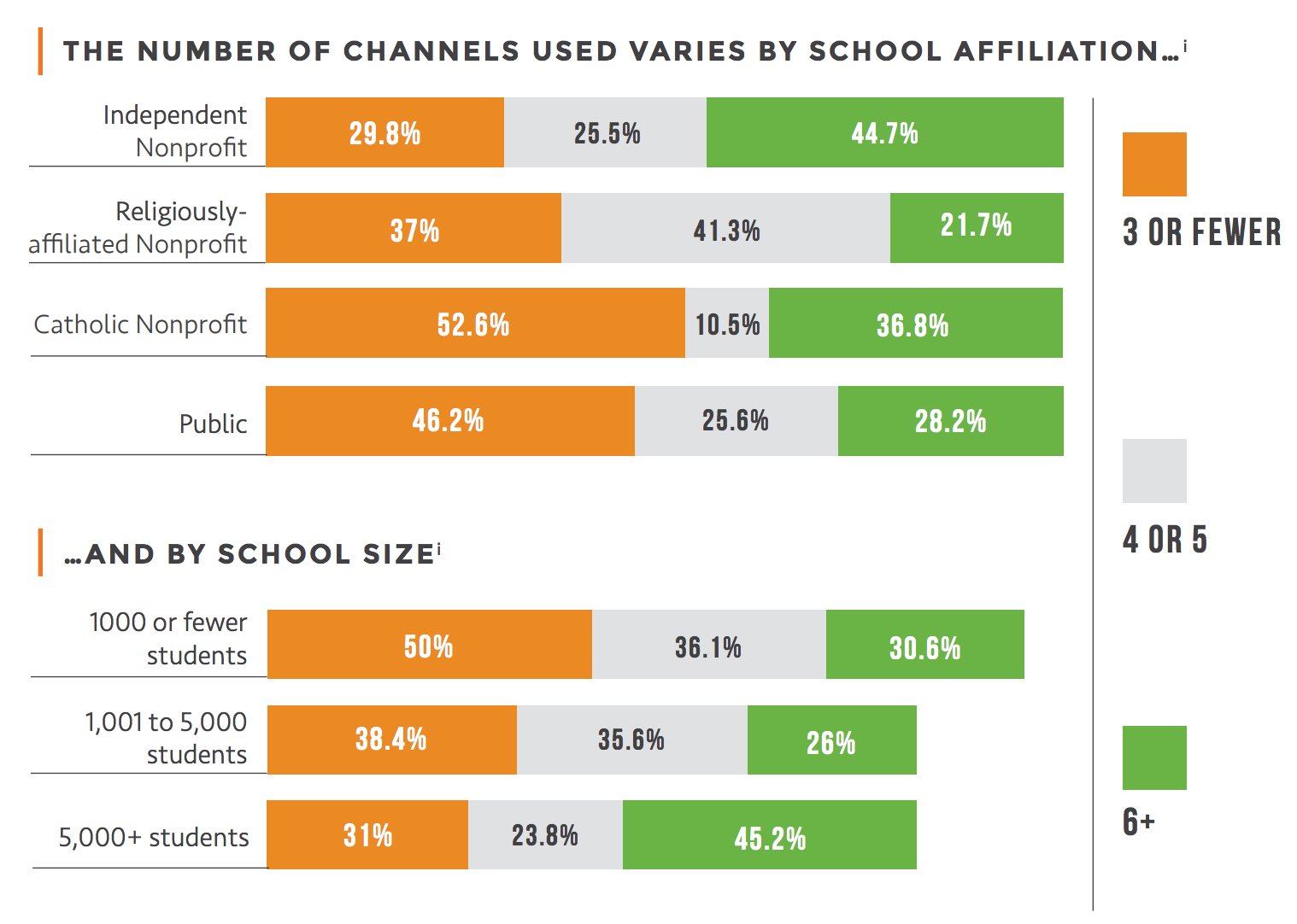
Source: Education Dynamics
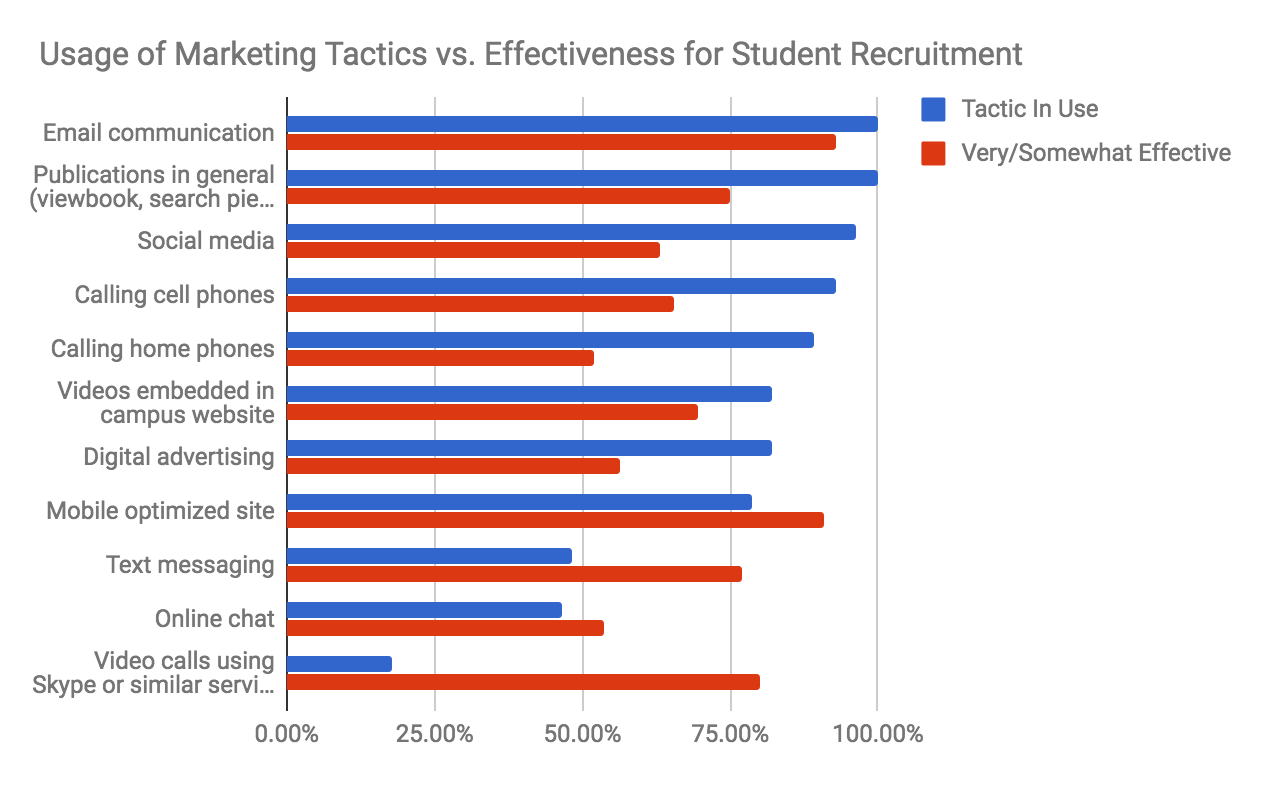
Source: Ruffalo Noel Levitz
Strategy #2: Increase Focus on Qualifying Applicants for Enrollment
The number of programs that online students are applying for has increased significantly since last year. This has put a premium on properly qualifying students through nurturing campaigns rather than assuming that applications are a strong indicator of student interest.
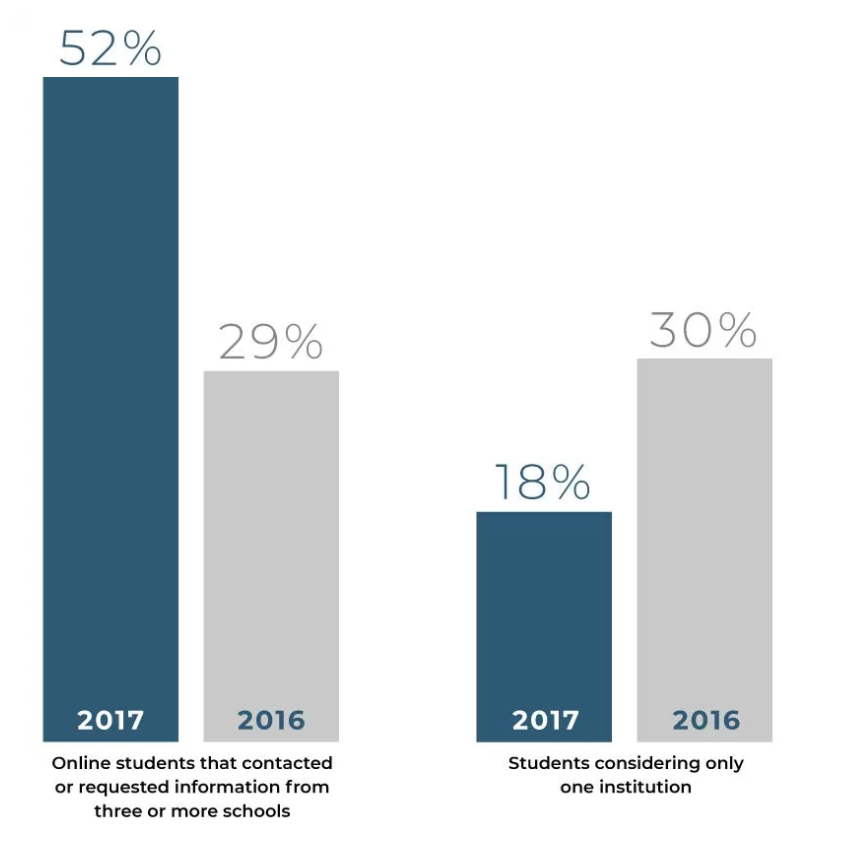
Source: Education Dynamics
Christina Fleming, Vice President of Marketing and Enrollment Services at Blackboard, uses the term conversion marketing to describe the process of turning qualified prospective students into enrolled students. In enrollment management, a conversion can mean many different things from filling out a form, finishing an application, attending an event, or contacting an advisor.
Colleges are using a variety of different approaches to achieve this goal with the most successful including systematically contacting students to code their level of interest, implementing predictive admissions tracking solutions, and implementing CRM solutions to log online communications.
Strategy #3: Rapid Response Time to Inquiries
Southern New Hampshire University (SNHU) is known for being one of the most innovative colleges in the US, named to the U.S. News & World Report for the past three years. Michelle Weise, leader of SNHU’s Sandbox Collaborative internal consultancy, has helped to frame the approach to innovation. Weise provides a good summary of the approach in her interview with EdSurge.
“There is a real possibility for creating lasting and transformative change with incremental improvements. But saying, ‘things should remain exactly as they are,’ only works in a context in which higher education serves more like a luxury good. It’s not that higher education needs to change, but it needs to tune itself to the changing needs of the folks who are in need of higher education. So, for all of those non-traditional potential consumers of education—who are looking for something different where they actually need a discrete set of skills to get them to the next level—they need something that helps make them more marketable and is aligned to the labor market.
This thinking led to SNHU’s approach in reaching non-traditional learners as a key audience, similar to the strategy that community colleges like Fayetteville Technical Community College have adopted. At first blush, traditional and online students might look identical due to the similar needs. By digging deeper, the team at SNHU discovered that online students are 30 years old, juggling work, family and other life demands. The team realized that this presented an enormous opportunity.
One important discovery in understanding the needs of online students is the necessity to find out if continuing education is even possible. They often research options late at night so responding to prospective students with an automated email response 24 hours later would often miss the window of opportunity. Understanding this context, SNHU set an internal goal of following up with a personal phone call within eight and a-half minutes of contact. They employ a more than 160 admissions counselors who monitor the phones, especially on weekends, to guide prospective students into the right degree program.
This approach to rapid response time does not just apply to online, non-traditional learners. Millennial students also expect this same level of responsiveness. According to Aslanian Research, as of 2016, nearly 50% of undergraduate students enrolled in the first institution that responded to their inquiry, resulting in an increase of 10 percentage points since 2015. This new landscape of increasing competition among institutions, additional complexity in managing marketing channels, and higher expectations from students creates a more challenging landscape to navigate.
Partnering with organizations like Walk West to make deliberate progress toward digital transformation is critical in augmenting the skills of college and universities, creating the right environment for students to move toward their goals in the way that works for best them.
